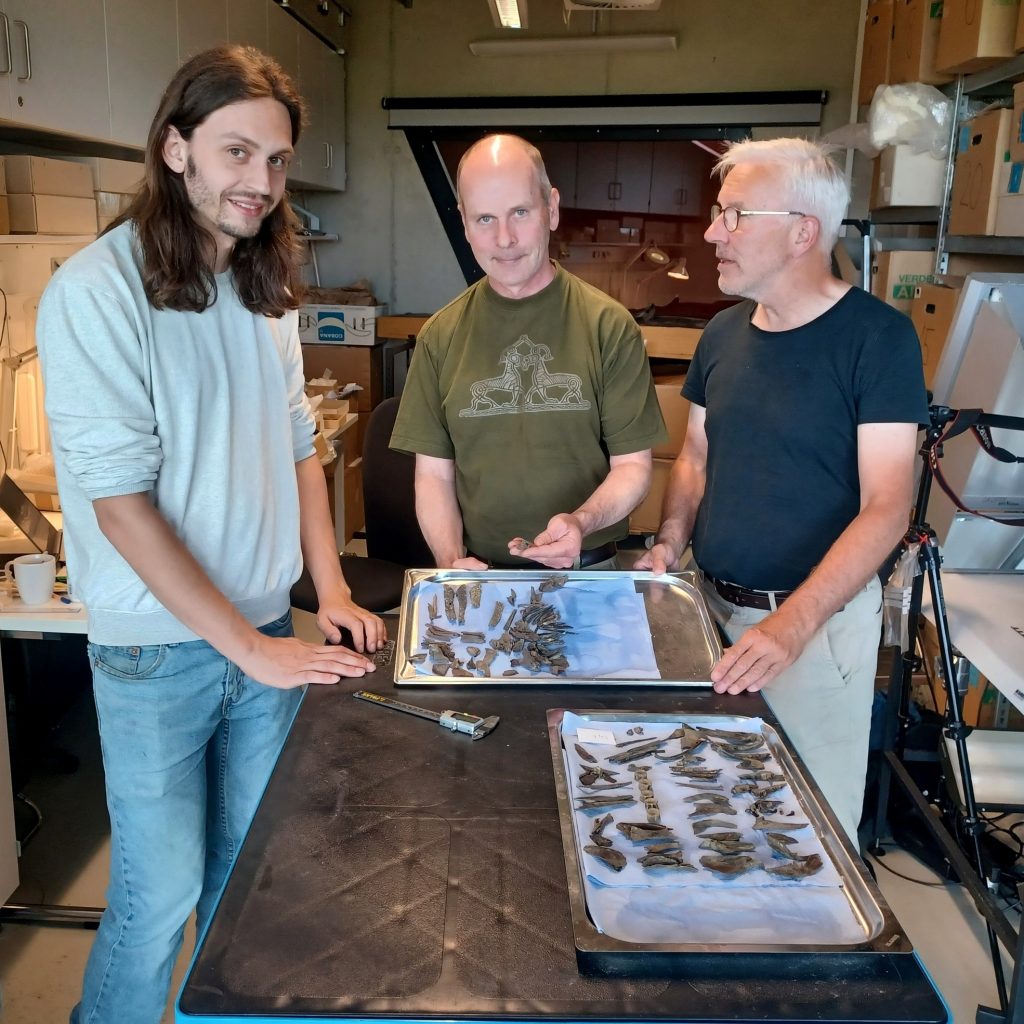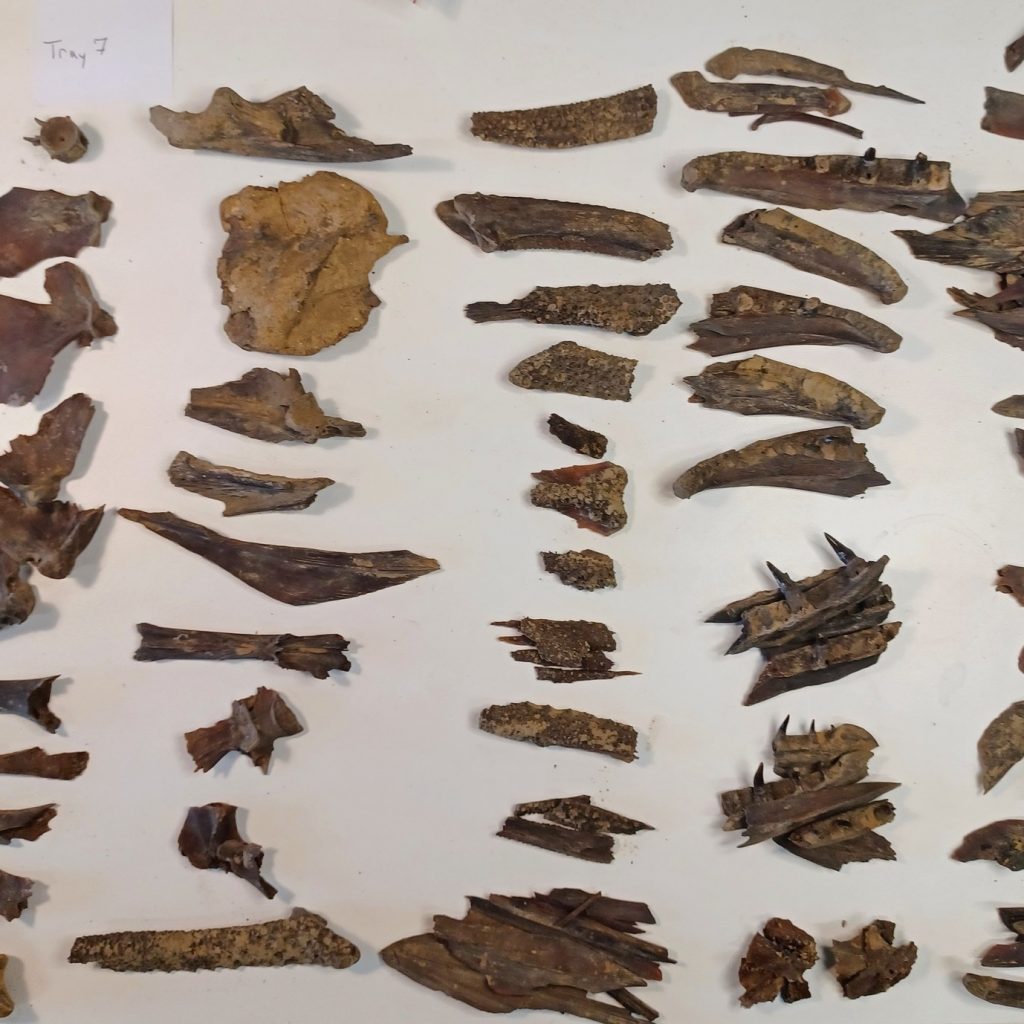Can fish bones reveal Neanderthal hunting techniques?
K. Ritchie & I. Verheijen
August 2025
On June 5–6, Moesgaard Museum zooarchaeologist Ken Ritchie traveled to the Paläon Forschungsmuseum in Schöningen, Germany, to examine fish bones from the site of Lehringen—in collaboration with colleagues Ivo Verheijen and Thomas Terberger.

The site of Lehringen has been assigned to the Eem interglacial period (approx. 130,000-115,000 BC) and is particularly known for the discovery of a straight-tusked elephant with a 2.4-meter-long wooden spear between its ribs – dramatic evidence of hunting in the Middle Palaeolithic. But the site also contains a wealth of animal material, including fish, birds, turtles, and mammals, which are now being studied in more detail.
The fish material includes pike (Esox lucius), catfish (Silurus glanis), and carp (Cyprinidae). The bone finds show that whole fish carcasses were deposited, and measurements indicate that some of the fish were quite large. Some of the central questions now are:
Are these fish the remains of active fishing – perhaps during spawning in shallow water – or do they originate from natural deaths? And what can the size of the fish say about the body of water they were living in?
The ongoing analyses aim to clarify whether there is evidence of systematic fishing among Neanderthals – and thus shed new light on their technological and behavioural capabilities.
